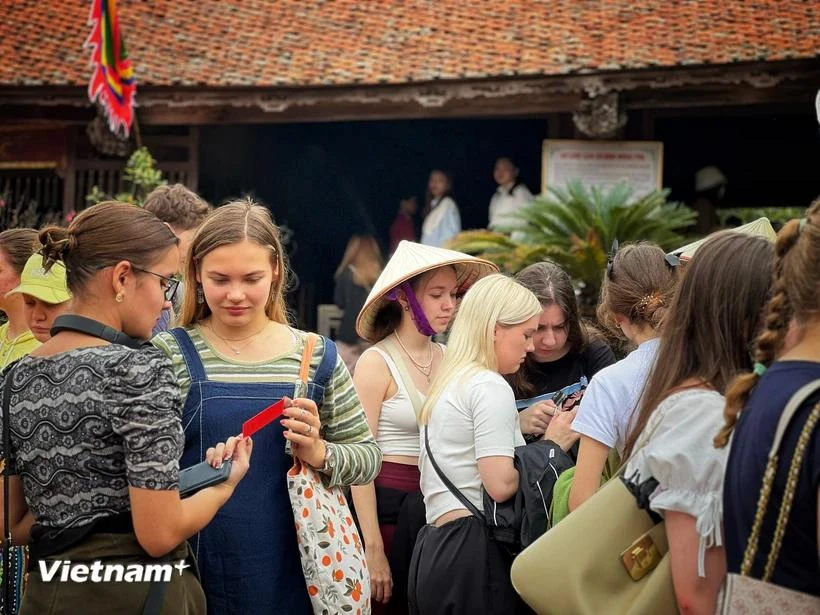
Hanoi (VNA) - Vietnam received more than 8.8 million foreign tourist arrivals in the first half of 2024, surging nearly 60% year-on-year and rising 4% from the same period in 2019 – the time before the COVID-19 breakout. This more than attests to the recovery of the tourism sector, according to experts.
Statistics from the Vietnam National Authority of Tourism (VNAT) showed that during the six-month span, the country also served 66.5 million domestic tourists.
Total revenue from tourism services was 436.5 trillion VND (17.23 billion USD), up 1.3 fold against the same time last year.
Notably, the number of foreign arrivals increased over 5% to 1.2 million in June although this is the low season for international tourism.
The Republic of Korea and China were the largest sources for Vietnamese tourism, accounting for nearly 26% and more than 21%, respectively, of the market share. They were followed by Taiwan (China), Japan and Malaysia.
The VNAT said the East Asian market was the key motive for the recovery of the non-smoke industry, with the number of tourists from China shooting up nearly 230%, Taiwan (China) 96%, the RoK 42% and Japan 39% year-on-year.

The Southeast Asian markets were also on track of recovery, with those from Indonesia escalating 116%, the Philippines 57%, Laos nearly 20%, and Cambodia 17%.
Furthermore, the number of foreign visitors hailing from European countries and regions eligible for Vietnam’s unilateral visa waiver programme that allows their maximum stay of 45 days also increased in the month. Impressive growth was recorded in Russia (75%), Italy (67%), Spain (43%), France (37%), Denmark (33%) and Germany (32%).
Ho Chi Minh City was the champion in terms of tourism revenue in the first half with 96.2 trillion VND, a year-on-year increase of 15%. Hanoi ranked second with a revenue of 55.4 trillion, surging 23% year-on-year.
The cities logged a sharp rise in the number of foreign tourist arrivals during the period. HCMC received 2.7 million, up 38%, while Hanoi welcomed 3.14 million, up 53%.

The central province of Khanh Hoa, home to renowned Nha Trang and Cam Ranh resort cities, was in the third place, with revenue of over 26 trillion VND, up 97% year-on-year.
Coming in the fourth place was the northern province of Quang Ninh, home to UNESCO Heritage Site Ha Long Bay, with a revenue of 22.2 trillion VND, rising 34%.
The north central province of Thanh Hoa ranked fifth as it pocketed more than 19.8 trillion VND. The locality has been recently dubbed “a rising star” among the nation’s top destinations for domestic visitors.

Experts attributed the robust tourism growth to the relaxed visa policy as well as a wide range of promotion programmes held by the sector and the Government.
Vietnam aims to turn tourism into a true spearhead economic sector with green growth and world leading development capacity by 2030.
This is part of a masterplan on the tourism system for the 2021 - 2030 period, with a vision to 2045 approved by Deputy Prime Minister Tran Hong Ha on June 13.
The plan targets 25 - 28 million international arrivals, 130 million domestic travellers, and an annual growth rate of 8 - 9% in the number of domestic tourists for 2025. By 2030, the international tourist number is hoped to reach 35 million and post an annual increase of 13 - 15% while domestic travellers hit 160 million and grow 4 - 5% annually.
Tourism is expected to directly contribute 8 - 9% and 13 - 14% of gross domestic product (GDP) by 2025 and 2030, respectively.
Under the master plan, this sector will create about 6.3 million jobs, including 2.1 million direct jobs, by 2025 and 10.5 million jobs, including 3.5 million direct ones, by 2030./.






















